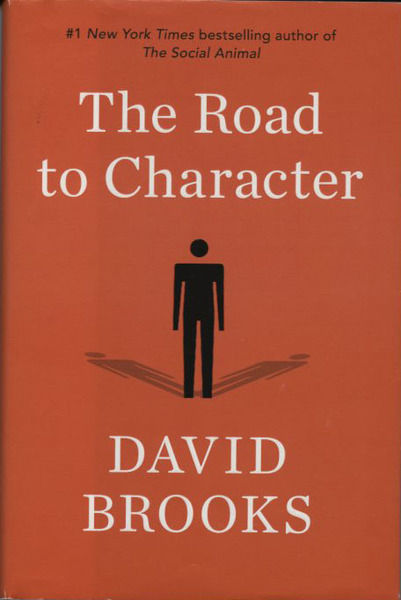‘Character’ will spark introspection
Published 1:00 am Sunday, January 10, 2016

- sunread_book_road
“The Road to Character” by David Brooks. New York: Random House, 2015. ISBN 978-0-8129-9325-7. 300 pages, $28.
David Brooks’ name is familiar to readers as a syndicated columnist for the New York Times and as Friday evening news commentator with Mark Shields on the “PBS NewsHour.” Brooks’ comments are carefully thought out, stated with reserve, insightful and spiced with subtle humor. Brooks’ goal in “The Road to Character” is best described in his own words: “I wrote this book not sure I could follow the road to character, but I wanted at least to know what the road looks like and how other people have trodden it.”
Trending
Eight of his 10 chapters are devoted to the dozen or so people whose lives in the author’s mind depicted not only greatness in accomplishment, but also greatness of soul. His subjects run the gamut of gender (five women and eight men, two of whom were black and one homosexual), profession (mothers, generals, labor organizers, social workers, writers and a theologian), sacred and strictly secular and history (fourth, 18th, 19th and 20th centuries). The first and final chapters comprise an introduction and the author’s conclusions.
Brooks’ thesis is what he calls “a broad shift from a culture that encouraged people to think humbly of themselves to a culture that encouraged people to see themselves as the center of the universe.” He uses several terms to describe this transition and which need to be recognized and understood to properly follow the author’s thought. Some, such as the Little Me, the Big Me and the crooked timber tradition (as the twig is bent, so grows the tree), are near self-explanatory, but Adam I and Adam II merit more precise definition.
Brooks uses two Adams to describe the two opposing sides of our nature; Adam I he calls the “external, resume Adam” who wants to build, create, produce and discover things, to enjoy high status and win victories; conversely, Adam II is the “internal Adam,” the “eulogy Adam” who wants to embody certain moral qualities – to do good and to be good, to sacrifice self in the service of others, to have a cohesive inner soul that honors creation and one’s own possibilities and to live in obedience to a transcendent truth. While Adam I lives by an economic logic, Adam II is governed by one that is moral. Adam I embraces the Big Me and Adam II the Little Me; “crooked timber” touches both Adams in the struggle to fulfill both personae and “master the art of living forever within the tension between these two natures.” He argues that moral realism, which emphasizes how little we can know, how difficult it is to know ourselves and the work required on the road to virtue, has given way to moral romanticism, which believes in our inner goodness, nature, the individual and sincerity, and that the two now are out of balance in favor of the romantics. Asserting that we live in a culture that nurtures Adam I and neglects Adam II, Brooks admits that the book is about Adam II and some people who have cultivated strong character by putting “iron in their core” and who cultivated wisdom. He writes, “I wrote it, to be honest, to save my own soul.”
In addition to the moral and philosophical discussions, Brooks enriches his text with detailed biographical information on each of his subjects and insights, not only into their private and public lives, but the internal conflict with which they struggled and that defined their lives and their characters. The trait that they hold in common is that they ultimately were redeemed by weakness.
The first chapter, “The Summoned Self,” features Francis Perkins, whose life was forever changed by the 1911 Triangle Shirtwaist Factory fire that killed 145 workers. The horror of that experience and turn-of-the century working conditions (child labor and 12-hour workdays) were stimulus to become one of the era’s most effective social workers and labor organizers.
“Self Conquest” pairs a somewhat rebellious Dwight Eisenhower, who could not control a raging temper with his patient and influential mother, Ida, who taught him how to conquer and control his worst qualities and a straight-forward simplicity that served him well throughout a demanding life in a time of world crisis. With Dorothy Day in “Struggle,” we find a woman conflicted by religion but haunted by God who found her calling in almost mystical Catholicism and learned the vocabulary of “simplicity, poverty and surrender” necessary to live among the poor, the immigrants and the dispossessed as they lived.
Trending
In “Self-Mastery,” Brooks reviews the outstanding career of George Catlett Marshall (with Eisenhower the second of two generals). Neither academically nor physically gifted, Marshall learned early that success in life would come, not from his natural talents, but from “grinding, the dogged plod and self-discipline.” Such qualities made him the master of the institutional thinking and organization, which in turn made him arguably the most indispensable general of World War II. In “Dignity,” Brooks reviews the times and struggles of two prominent civil rights activists and labor organizers, A. Philip Randolph and Bayard Rustin. They shared a common concept of the dignity of man, and each carried himself always with erect posture, even during informal occasions, and relied on intense self-discipline as they successfully formulated the concept and basic ground rules of nonviolent confrontation, which included sit-ins, building labor unions for Pullman car porters, waiters, waitresses and other disaffected groups, and all this in the 1930s, well before the advent of the civil rights movement.
“Love” pictures the unlikely but intellectually productive union of Mary Ann Evans, aka “George Eliot,” with her longtime lover, George Lewes. Damaged by the rigors of Protestant thought in the 1830s, Mary Ann was at odds with the religious fervor of the time, which was at tremendous odds with her human “absolute need of some person who would should be all in all to her, and to whom she should be all in all.” In time she would renounce Christianity but not the “God of creation” in her transition to becoming George Eliot. She opted for an intense intellectual honesty, an arduous desire to live according to the structures of her conscience – an amazing act of bravery amidst the social pressure of the time. Brooks’ words for Lewes, the partner who shared with her the love of ideas, were particularly kind, noting that in giving up his established life and going with her, his arguably was the greater sacrifice in that he recognized that Eliot possessed the greater talent and devoted himself to encouraging, lifting, stabilizing and directing her thought through her mazes of insecurity and depression at the expense of his own creativity.
Brooks saves his concluding chapters, “Ordered Love” and “Self-Examination,” for undisputed giants in the history of Western thought, Augustine and Samuel Johnson. Much like Ida and Dwight Eisenhower, Brooks makes much of the very complicated relationship between the brilliant and charismatic Augustine and his mother, Monica, and her influence on him on that has intrigued scholars for centuries. Her prayers gave him strength to conquer his profound love of the Adam I items the world could offer in recognition and status, and surrender these for a destiny in Adam II. Samuel Johnson, on the other hand, seems to have been born with three strikes against him before he stepped up to the plate: a frail infant later permanently blind in one eye, poor vision in the other and deaf in one ear. Physically he was large, ugly, scarred and ogre-like. Even as a child, discovering the physical differences between himself and others began a determined fight against his maladies and groped his way to independence and defiant disregard for his life-long physical limitations. These early encounters marked the beginning of a likewise life-long internal battle of self-examination and brutal honesty with himself and others. The sections on Augustine and Johnson are intriguing. Other names and examples of character development are mentioned, of course, including that of Katharine Meyer Graham, who unlike the other subjects had to make a transition from Adam II to Adam I, but these will be left to the reader to discover and evaluate.
This book is not for the philosophically faint of heart – it is hardly possible to read the discussions without a serious sense of introspection: “Is this true of me?” “Would I do that?” “Am I capable of that kind of sacrifice?” “Am I honest with myself?” “Do I have character?” I have never put stock in beginning with the final pages to see how a book will conclude. But I will make an exception with this one. I recommend that the reader begin by reading “The Humility Code” and have in mind Brooks’ 15-point summary on how his subjects successfully made Adam I subject and subservient to Adam II. By this time your homework will be complete and you will be ready to read “The Road to Character.”
— Reviewed by Dwight R. Pounds, Ph.D; Col., USAFR (Ret.)






